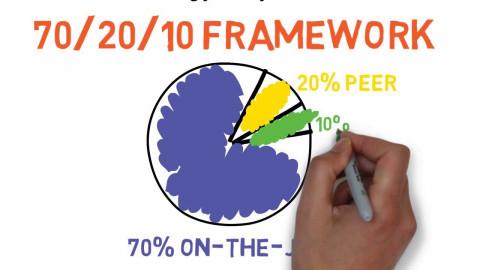Is the 70-20-10 Model Still Relevant to Online Cross Cultural Training?
If you work in Learning and Development, then it’s likely you know about the 70-20-10 Model.
If not, then it can be simply summarised as the work of three academics in the 80s who used extensive research to establish optimal learning conditions.
Collected data showed that 70% of learning takes place on the job, 20% is acquired from peer interactions and that 10% of learning comes from formal training.
Although the majority of learning and development practitioners have subscribed to the wisdom of this model over the years, the boom in online / e-learning and other advances in learning methodologies has reignited a debate on whether the model is still relevant.
Cross-Cultural Training & Learning
Can something so simple really account for the rapid evolution that we are currently experiencing in the training world?
From a cultural training perspective, however, and despite changes in the way in which cultural training programmes might be delivered, this model continues to be incredibly relevant.
Cultural training can range in nature from generic ‘cultural awareness training’ which helps individuals to understand the way in which cultural difference might impact the business setting to country-specific cultural training. For individuals working globally, formal training is incredibly useful prior to departure to a new cultural setting.
Whether one on one or online / eLearning, the results are generally the same; the learner acquires an understanding of the challenges they are likely to face when they are working in the new culture and gains the strategies needed to adapt their behaviour and to get the best out of the new cultural setting.
Regardless of the way in which the training is delivered, this training can only ever be theoretical. Delivered over a short time frame, it’s fair to equate programmes to 10% of the learning experience.
Although the training will prepare individuals and help them enter the new cultural setting with a decent understanding, this understanding can only possibly be of the textbook kind. This isn’t to underestimate the importance of the training however, as without it, individuals entering a new culture with little preparation are more vulnerable at the offset to misunderstandings, offence or even (in the case of expats) assignment failure.
Important as it is though, it is not the be all and end all as culture is something that must be lived and breathed to truly understand it.
Understanding differences in communication style, negotiation, style or management style for example as a consequence of culture has to be witnessed to be truly grasped. The subsequent need to assimilate or adapt behaviours can again only be truly understood if feet are firmly planted in the cultural soil.
This living and breathing experience without doubt forms a good 70% of this learning experience. Without it, the learner will only have a superficial understanding.
This brings us to the importance of peers. Peers who are already in situ in a particular country, or, who have perhaps completed an assignment and returned to the home country, have an incredibly important role in mentoring colleagues due to depart. Their learning experiences, dos / don’ts, tips and advice will go an extremely long way to helping their colleague assimilate and get the best out of their assignment.
So, from a cultural training perspective, the 70-20-10 model continues to provide a relevant and helpful framework for the learning and development or mobility staff in global offices.
Do changes in online training affect it? No, not at all. If anything, they make the model even more relevant.
Related Posts
By accepting you will be accessing a service provided by a third-party external to https://www.commisceo-global.com/

 +44 0330 027 0207 or +1 (818) 532-6908
+44 0330 027 0207 or +1 (818) 532-6908
